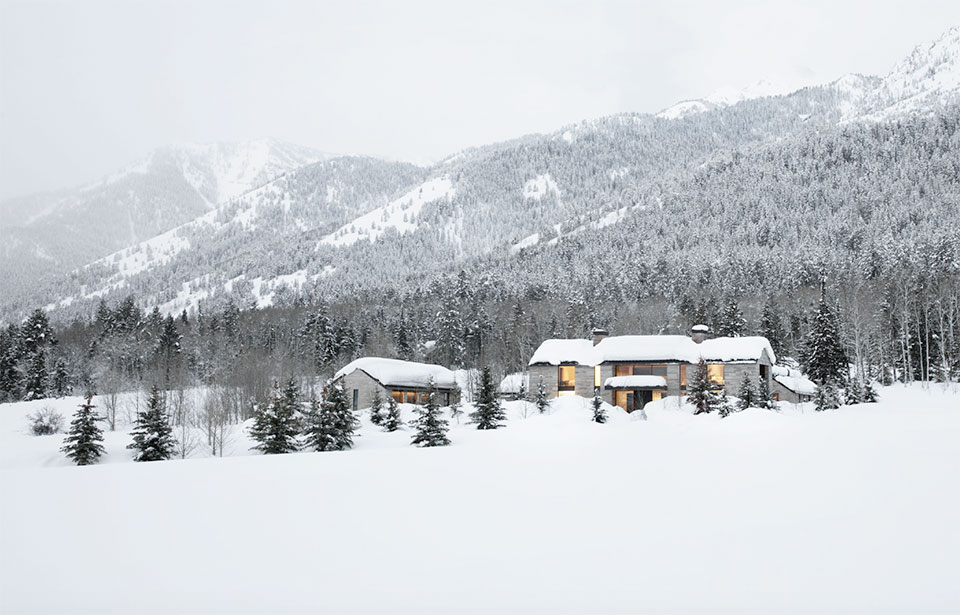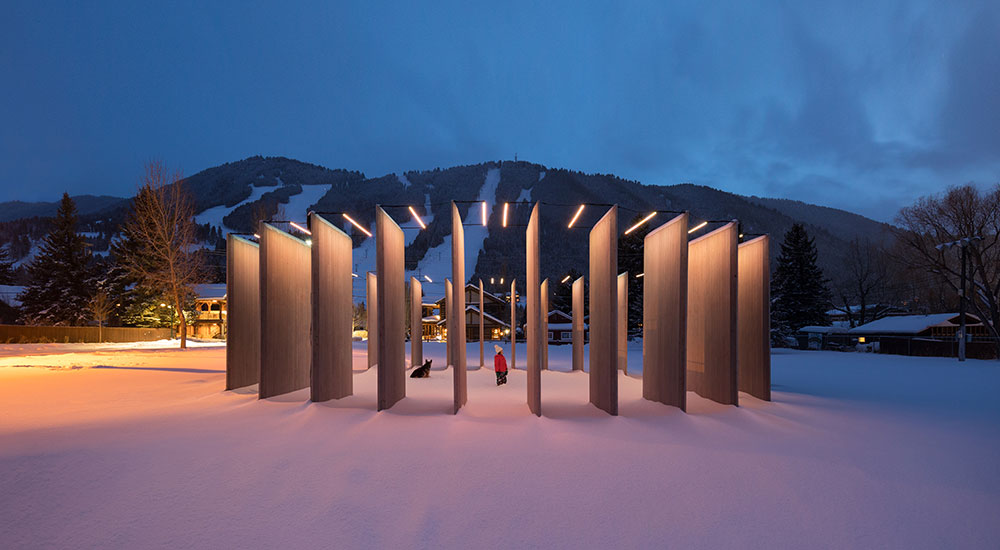The Nuances of Negative Space
by Aaron Kampfe
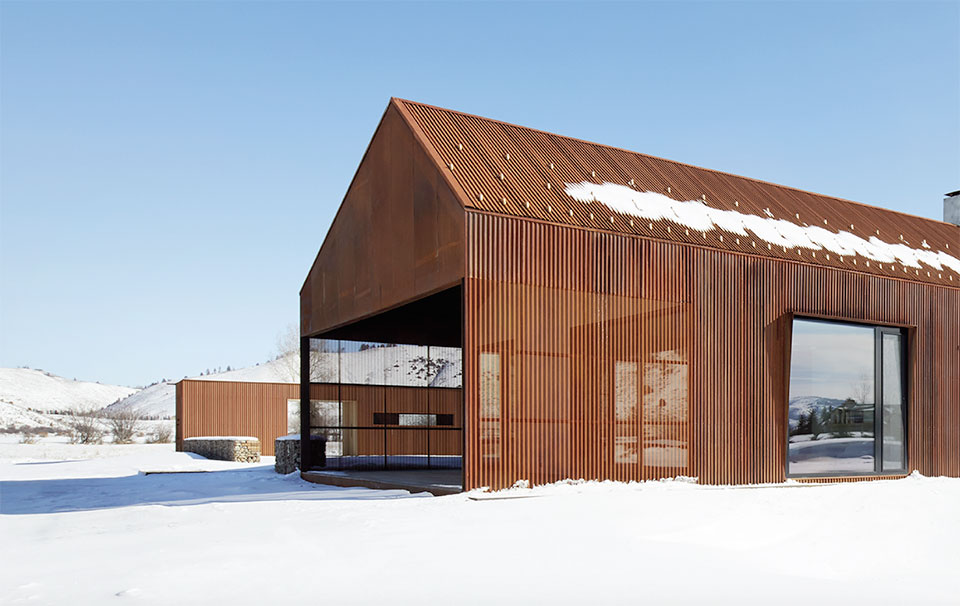
In architecture, as in art, what is intentionally omitted can be as impactful as what is included.
Walls can be designed to both enclose & expose. Designing & crafting a simple object can be as difficult as a complex object. A boundary can mingle both interior & exterior spaces.
In the abstract, what is valued in the American West is often simply “open space”—unfilled, uncluttered emptiness. To design architecture is to fill space, an act that may seem antithetical to exactly what is so appreciated. Since 1992, CLB has been balancing these seemingly contradictory values and their approach continues to challenge conventional notions and expand beyond established boundaries.
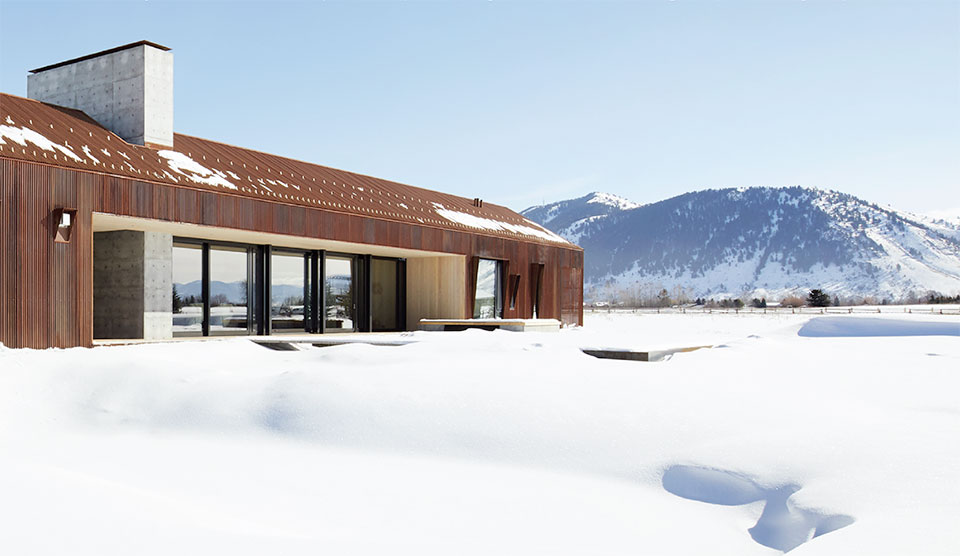
By adopting the motto “inspired by place,” CLB self-selected an ideal with an inherent burden. Their designs for the built-environment strive not to destroy that which inspires them—that place. A perusal of the firm’s portfolio offers an array of unique structures ranging from custom residences to multi-use urban buildings to interactive public art. Each page of their website or recently released book reveals a unique creation. Each one offers one-of-a-kind architecture, interiors, and craft. Each image beckons the viewer to explore more. From the wide view of a residence blending into its surroundings to a close-up of a finely crafted piece of hardware, photographs of CLB projects intrigue, titillate, and inspire.
One of CLB’s partners in craft, Jeff Brandner of Brandner Design, muses, “Each CLB house is unique but there is something that is cohesive about them. A CLB design doesn’t stop giving as you walk through it. You keep noticing details. It continues to give and continues to deliver the message of what that design intended to do. That is the goal. Every time that you walk into a room or space, you notice things you didn’t notice before. It continues to provoke thought and reflection.”
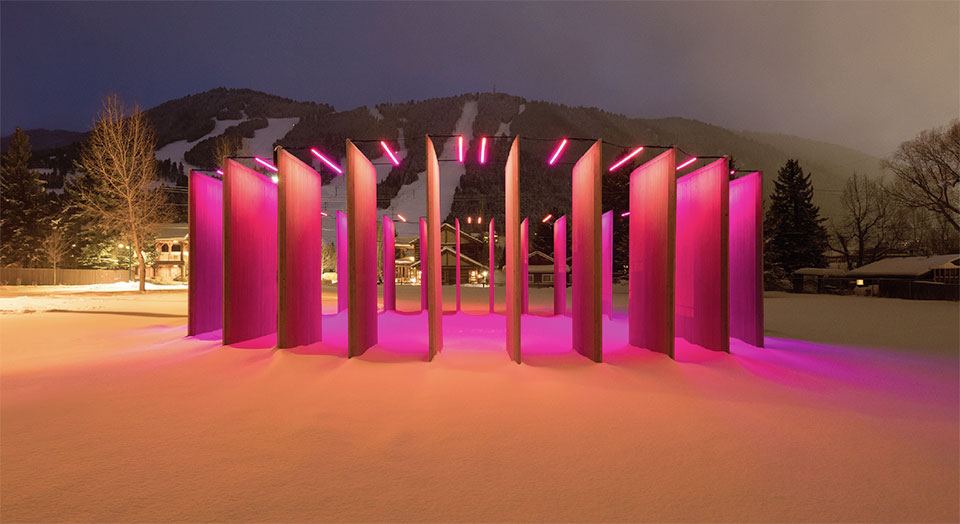
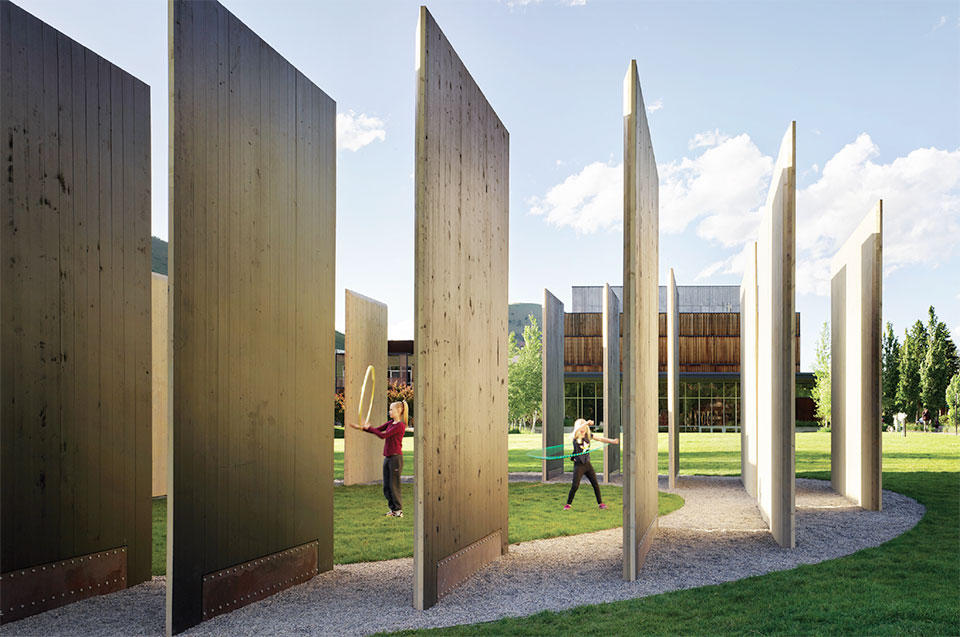
For nearly 30 years, CLB has been rooted in the West’s vernacular as well as on the forefront of the region’s architectural imprint. Today, principals Eric Logan, Kevin Burke, and Andy Ankeny work with a staff of 45 from their offices in Jackson, Wyoming, and Bozeman, Montana. Their current projects extend beyond the resort enclaves of the Rockies to the shores of the Pacific to New York City’s Times Square.
Core to CLB’s practice is an unafraid and unapologetic embracing of the abstract. Their clients and design partners are integrated into a creative process that uses fluid architectural narratives that, ultimately, will result in something concrete—a building. These structures embody paradoxes where walls can both enclose and expose, simple objects can express complex themes, and physical boundaries mingle both positive and negative space.
Enclosed Space. Open Walls.
In 2018, Jackson Hole Public Art, with support from the Center of the Arts, called on the arts community to submit proposals for a public art piece to be installed on The Center Park Lawn. The project attracted ten proposals and CLB was awarded the commission.
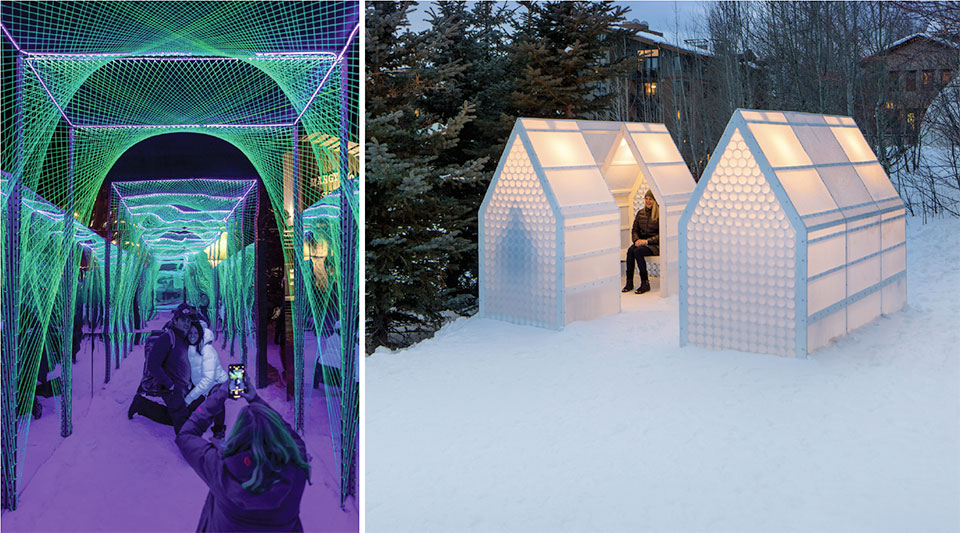
What is immediately recognized in the design is its apparent simplicity—vertical wooden panels arranged like spokes of a wheel. From a distance, the composition speaks to the surrounding mountains, engages passing drivers and pedestrians, and adds sculptural interest to the flat lawn of a park surrounded by downtown buildings. Its form is derived from symbols of placemaking in the Mountain West, such as fences and corrals, as well as iconic landmarks like the West Buttress of the Grand Teton. Its simultaneous transparency and opaqueness create layers of interpretation, lending depth and complexity to an otherwise simple form.
By design, the Town Enclosure beckons one to explore. We want to run inside and feel enclosed by walls that are connected by open space—negative space—but not physically connected. As one meanders through the structure, one is always inside its panels but at the same time always outside. To sit in the middle of the enclosure, one is both surrounded and exposed. Its open walls embody paradoxes.
The public art installation was designed to be experienced, not just viewed. As an art space, the Town Enclosure Pavilion welcomed youth and professional dancers, hosted playwrights and rehearsals, and staged poets and spoken word performances. The community practiced flower arranging, yoga, life-drawing, cloud-making, and stargazing within its open walls.
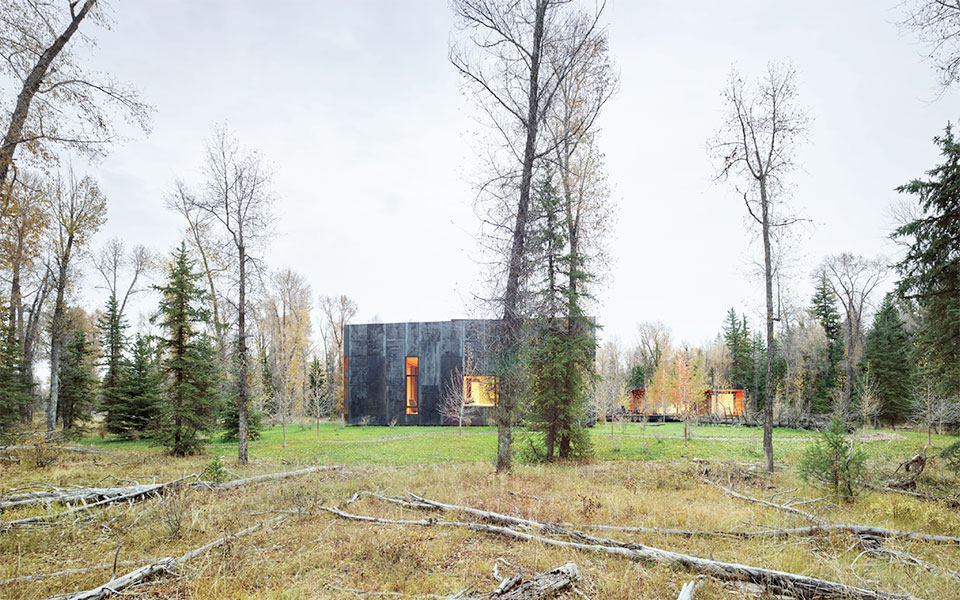
Always intended as an itinerant exhibit, Town Enclosure was dismantled in Jackson in the fall of 2020. Under the management of OSM Construction, it was moved to Story Mill Park in Bozeman where the installation offers another community the opportunity to interact with the space in its own creative ways.
“When designing public spaces…we are accountable to a wider audience.”
–Eric Logan, Principal, CLB
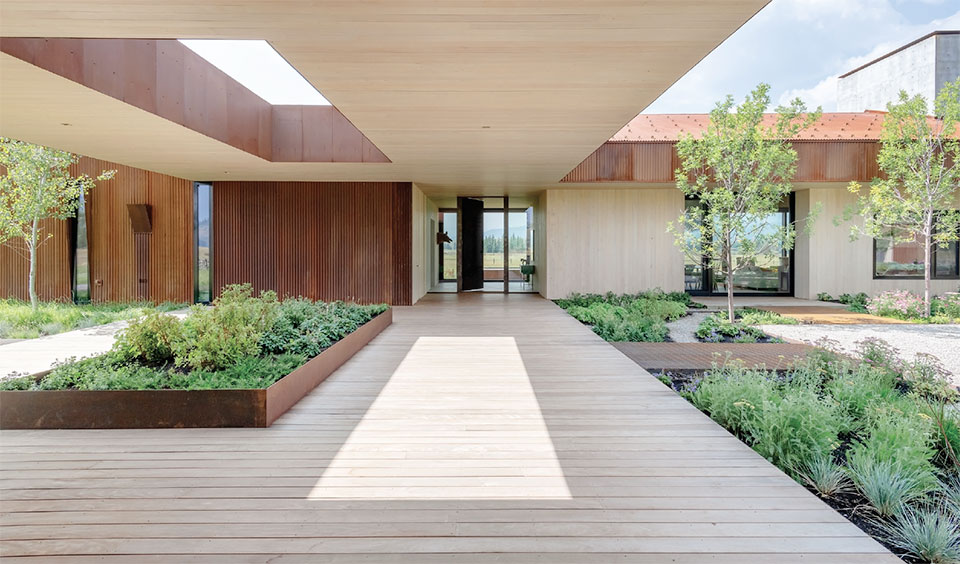
For architects, designing a public structure carries added responsibility. Eric Logan says, “When designing public spaces—such as a ski lodge, airport, or art installation—we are accountable to a wider audience. The end-user is not just a homeowner, but the public. That space will be experienced by thousands of people and its impact is much greater.”
Architectural Haiku
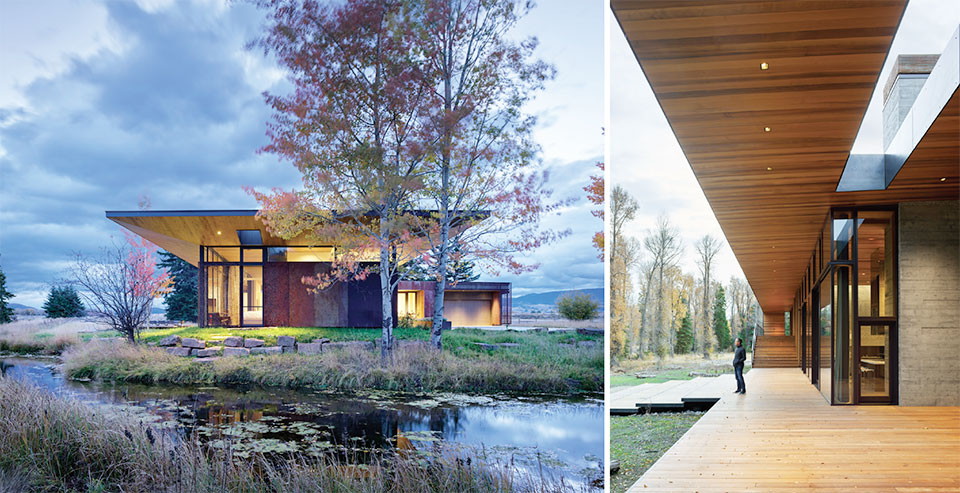
A single word is not enough to express an abstraction; too many words only obfuscate and distract from that abstraction. Like poetry, well-conceived architecture explores that balance between “too much” and “too little.”
In CLB’s recently released book, Inspired by Place, Agnes Bourne, a nationally recognized designer and professor, contributes an epigraph. As an exercise, Bourne has had her students write a haiku that represents the narrative of a built space. Like designing a building, writing a haiku has limits in terms of structure, space, and form. The writer must work within specific parameters; every word matters and the choice to omit specific words matters. The specific words of the haiku are like a building’s materials—concrete, wood, glass, and steel—and how these words are chosen and organized is the design. When these elements are well-crafted, the result is an expression of a theme reduced to its essence.
The CLB process is like creating collective poetry. Eric Logan, principal, reflects, “At a certain point, our abstract ideas must become concrete. Fuzzy concepts such as ‘integration with the natural environment’ must be executed and built. We choose what to include and what to exclude. We carefully vet whom to include as partners in the process. At the conclusion of a project, we have a structure that is built with the influences of sometimes over 100 people who contribute at many levels—from abstract ideas to physically crafting materials. Our success is measured in how well we interplay at all stages of the process.”
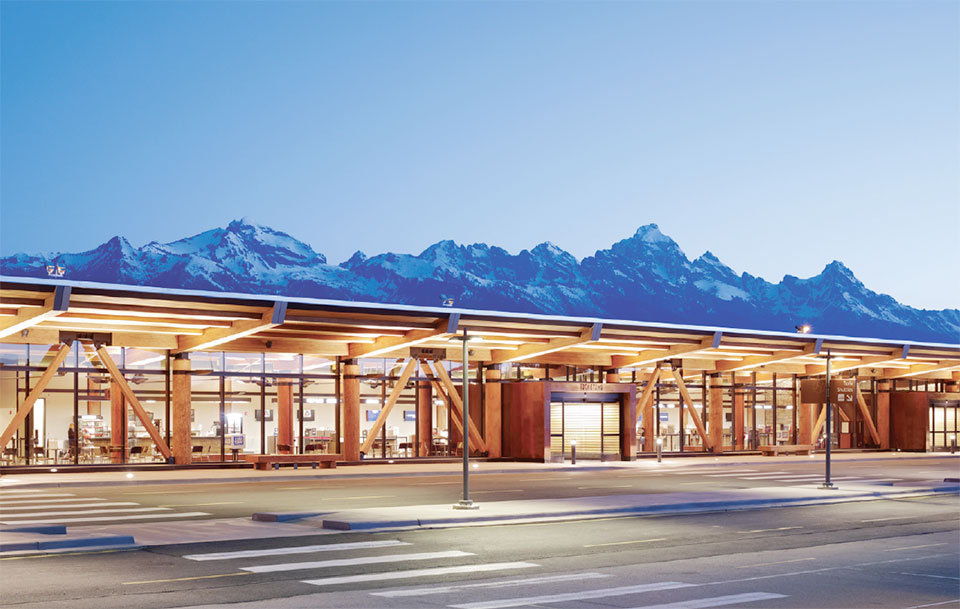
“At a certain point, our abstract ideas must become concrete. Fuzzy concepts such as ‘integration with the natural environment’ must be executed and built.”
–Eric Logan, Principal, CLB
Brand: Holistic. Integrative. Relational.
On any ranch, the ranch’s brand is found not just on livestock. Beginning with the ranch gate, the symbol can be found painted on barns, stenciled on tools and equipment, embroidered on hats and jackets, and burned onto fireplace mantels. The brand identifies and unifies and is the symbol of not just that place, but the experience of that place.
CLB has taken that concept of “brand” and applied it to projects beyond its core businesses of architecture. Sarah Kennedy, lead interior designer, explains, “We strive to think of things holistically. Every element of design is interrelated with guiding ideas that run throughout.”
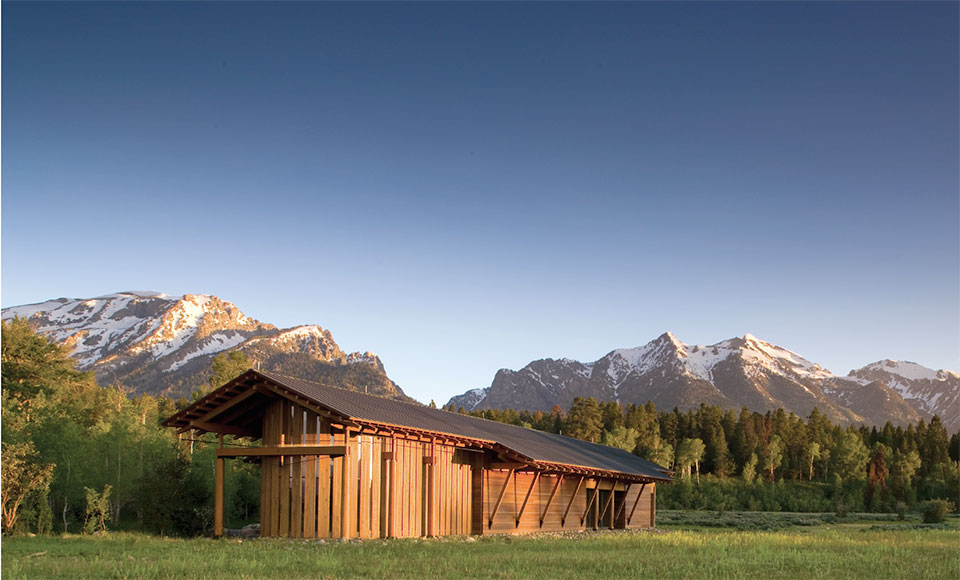
One example of brand integration is a CLB project on a sprawling ranch near Big Timber, Montana. Sarah says, “We’ve been tasked with creating a comprehensive master plan for the property from establishing roadways and building locations, the design of the various structures, and even a brand for this property. In this instance it is not a livestock brand, but articulating integrated design themes that range from an over-arching ranch-wide color palette to details as ‘minor’ as the ranch’s pencils. The brand should feel natural and function in the background and the subconscious. The temptation is to over-design, but less is more.”
Headed by creative director Allison Bryan in the Bozeman office, CLB’s brand division provides a holistic, unified approach to design. Allison returns to CLB after a hiatus in Portland where she previously worked for local, national, and global branding efforts as well as her own architectural practice. She says, “CLB has always incorporated storytelling within the scales of the built-environment and we’re striving to tell those narratives in a much more intentional and explicit way. In our brand division, we facilitate the creation of narratives that guide the project’s stakeholders through their processes—be it for an extensive property like a ranch or a global sports brand establishing its identity and core messaging.”
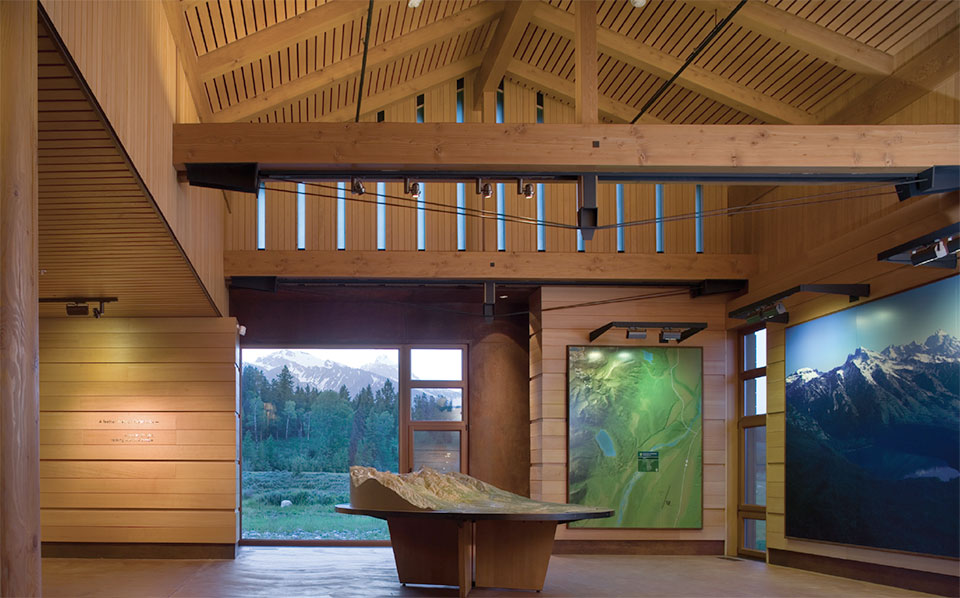
Peter Belschwender, CEO and Principal at OSM Construction, reflects on his years of knowing and now working more closely with CLB in Montana, “Throughout any project, everyone involved must have hard conversations—the architect, interior design, builder, sub-contractors, and client. Working with CLB is like being on a team of a grand art project where there is potential for people to go in different directions. CLB brings a unifying vision, but their approach isn’t ego-based. Complicated issues can be discussed with grace because CLB creates an even playing field, where there is give and take, and they trust us to do our jobs.”
“Throughout any project, everyone involved must have hard conversations—the architect, interior design, builder, sub-contractors, and client. Working with CLB is like being on a team of a grand art project where there is potential for people to go in different directions”
–Peter Belschwender, CEO, Principal, OSM Construction
Construction & Craft: The Macro & Micro Interplay
A project’s architectural haiku and branding provide a framework, conceptional direction, and guidance, but ultimately structures aren’t ideas of the mind; the built space consists of materials that are assembled and crafted by people. A single residence may be ‘touched’ by over 100 team members and getting that many people working under a unifying vision is one of CLB’s challenges as well as one of its strengths.
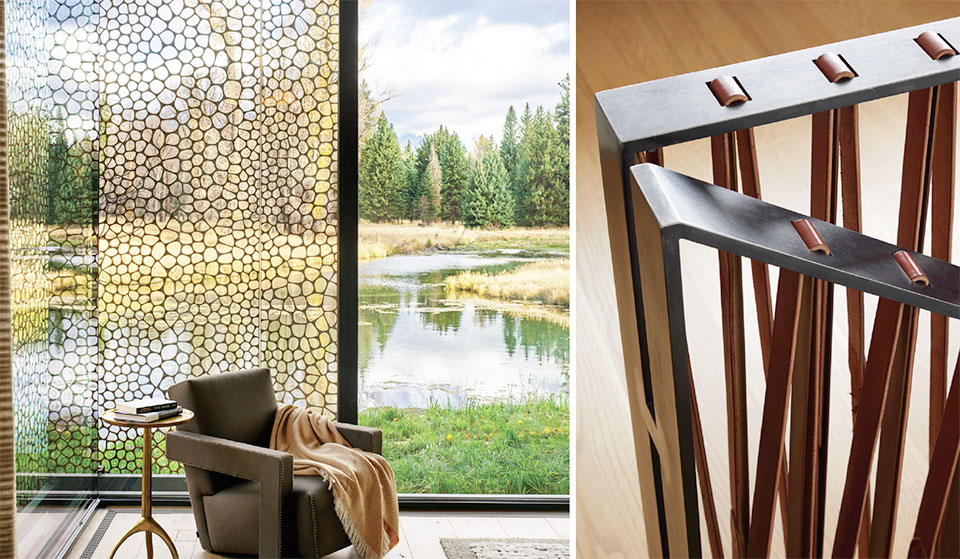
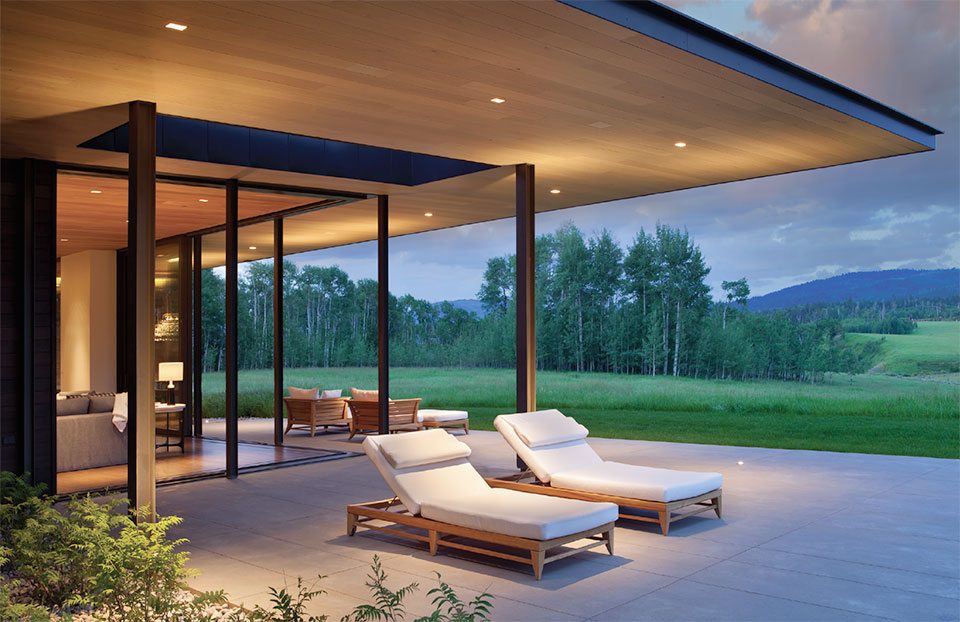
Over the years, CLB has carefully curated its building and design partners. In its network are a plethora of talented professionals, tradespeople, craftsmen, and artists. Examples of individuals who could all contribute to a given project are landscape architects, metal workers, furniture makers, digital integrators, stone masons, construction engineers, lighting designers, and more. The skill sets and responsibilities are diverse, but everyone must be “on brand.”
Among CLB’s preferred fabricators is Bozeman-based Brandner Design. Jeff Brandner, the company’s founder and owner, says, “People can design houses that look different from other houses but can they pull it off when every detail is perfected? It is easy to design something that looks different from a distance, but when you walk up to it and see the layers, that is what makes a CLB house different. CLB has the design-vision to create in ways that juxtapose and interplay elements from the 360-degree view from above to customization of everyday objects. Because we do that well and CLB does that well, our relationship continues to push the envelope.”
CLB dedicates some of its website content to simply “objects.” While the broad strokes of architecture garner the most attention—rooflines, floorplans, materiality, structural design—the details can get passed over. CLB brings craftsmen and designers into its fold by sharing the project’s narrative and letting them create. Examples are fireplace screens, door hardware, stairs railings, bunk bed ladders, and a variety of furniture pieces. The resulting products are seemingly simple objects that are first and foremost functional, but also original, inventive, intricate, and beautiful.
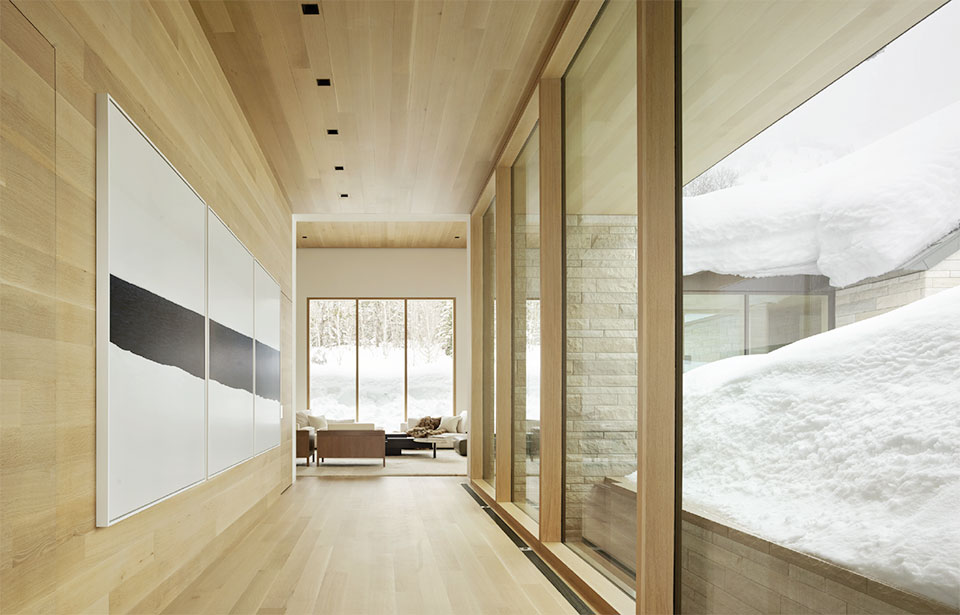
Mark Pollard, managing director and Principal at OSM Construction, says, “CLB doesn’t ‘cowboy stuff,’ jumping on and hoping to hang on for the ride. Rather, they are process-oriented, collaborative, calculated, and intentional. Whether in the design studio or onsite with our crew, CLB can think comprehensively from the siting of the structure to the selection of the doorhandle. Every detail is thought-out and related to every other detail, which really helps our craftspeople execute their vision for the project.”
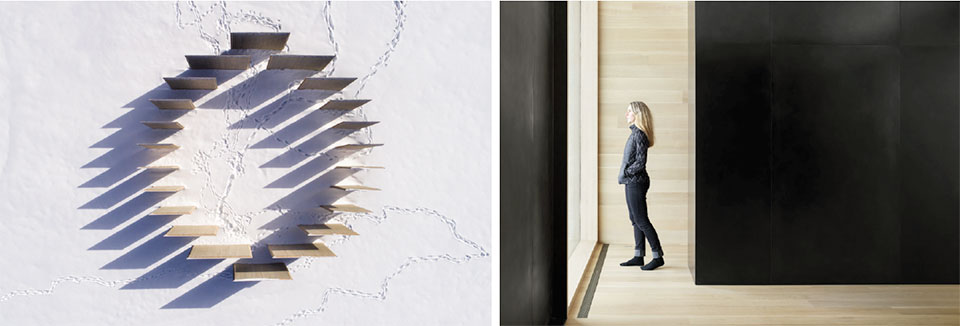
The Multi-dimensions of Design
Often, the first thought about architecture is floorplans—two-dimensional schematics. With the rapid advancements in technology, 3D renderings have given the design process a sophisticated tool to create and visualize in three dimensions. But the layers of the architectural experience extend beyond what we see. Architecture is tactile, emotional, and experiential and CLB’s approach to its craft is holistic; their process intentionally keeps these other layers at the forefront.
In the foreword to Inspired by Place, Ian Volner, writer and critic on architecture, design, and art, tracks the evolution of CLB. He writes, “The firm’s workshop environment makes its architects particularly well-suited to this kind of work, with all the designers coming together alongside clients and consultants to tackle projects of dizzying complexity.”
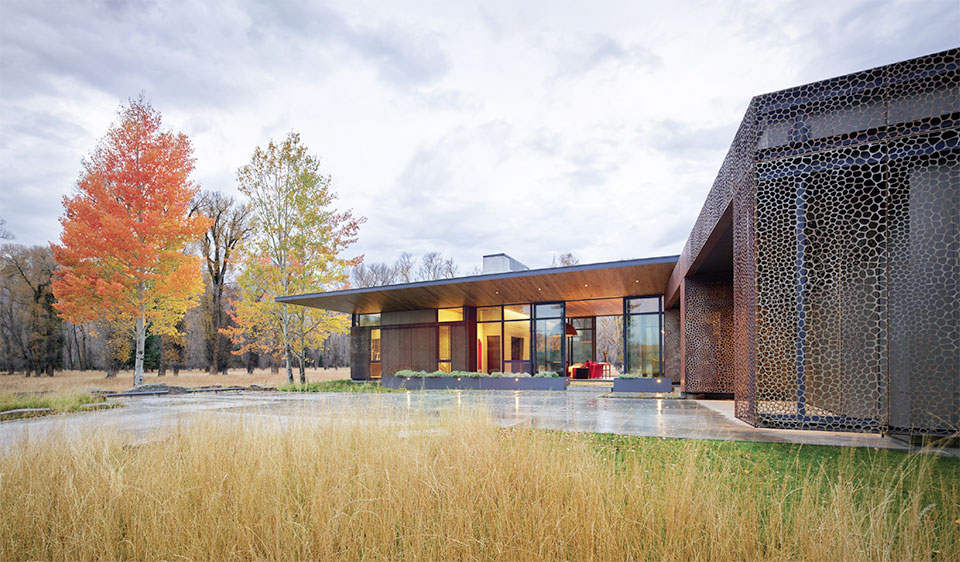
As a firm, CLB seeks out and accepts opportunities that appreciate their process and the resulting products. Eric Logan says, “CLB is not afraid to step outside its comfort zone. While rooted in the Rocky Mountain West, we continue to expand our influence from both a design and geographic perspective. The breadth of places and spaces that inspire us has grown and now ranges from coastal residences in California to public art installations in New York City.”
Architect Tom Kundig writes in the introduction to Inspired by Place, “Spending their lives in the dramatic, expansive landscape of the Tetons has taught CLB’s designers not to be intimidated by nature’s grandeur, but to understand the role of architecture within it. They address this drama with nuance and subtlety, crafting experiences where architecture is the vessel for an intimate connection to place. In a moment when our culture is infatuated by the loudest voice and the biggest move, we can learn much from CLB’s decidedly humble and modest approach, where the quiet beauty of the natural environment always takes center stage.”
“In a moment when our culture is infatuated by the loudest voice and the biggest move, we can learn much from CLB’s decidedly humble and modest approach, where the quiet beauty of the natural environment always takes center stage.”
–Tom Kundig, Architect, from Inspired by Place
